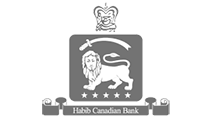info suisse Spring 2016
Government | Switzerland-Canada Comparisons
Government | Switzerland-Canada Comparisons
May 2016
Canadian and Swiss Citizens at the Ballot Box
(Kurt Schläpfer)
Citizens in Canada and in Switzerland vote for elections every four years, on three levels – federal, provincial (Canada) or cantonal (Switzerland) and municipal. There are only marginal differences as to how the elections are conducted in the two countries. However, dramatic differences emerge in the way how people can express their opinion at the ballot box on specific issues. The political instrument for this form of public consultation is the referendum. Referendums can be required by law (obligatory referendum) or initiated either by the government or by the citizens. For a comparison between Canada and Switzerland, we will examine the Province of Ontario and the City of Toronto (in Canada) and the Canton of Zurich and the City of Zurich (in Switzerland).
 Information sign announcing the next "polling weekend" in Switzerland
Information sign announcing the next "polling weekend" in Switzerland

Referendums in Canada
Referendums are rare in Canada. Only three have ever occurred on the federal level:
- 1898 (introduction of prohibition of alcohol)
- 1942 (introduction of conscription)
- 1992 (division of powers between federal and provincial jurisdiction)
In the Province of Toronto, three referendums were held on prohibition, the last one 1924. Only one more provincial referendum followed in 2007, dealing with an electoral reform of the Legislative Assembly of Ontario.
Fare more frequently, the citizens of Toronto are called upon for public consultation. Since 1940, a total of 49 referendums were presented for voter approval. Apart from a few obligatory referendums regarding financial issues held in Toronto before 1960, all other referendums were initiated by the government. It would be logical to assume that the outcome of a referendum is binding, meaning that the government is obliged to act according to the expressed will of the electorate. However, referendums in Canada are not binding (except obligatory referendums). An example of a non-binding referendum was the proposal to amalgamate six municipalities to form the present-day City of Toronto in 1997. Although the voters were overwhelmingly against this proposal, the amalgamation was introduced in 1998.
Referendums in Switzerland
Switzerland knows three types of referendums: the obligatory referendum, the citizen-initiated optional referendum and the citizen-initiated referendum called people’s initiative, all of them binding for the government. Referendums are central to Switzerland's political system of direct democracy and are held three or four times a year at national, regional and local level (on so-called polling weekends). During the course of ten years (2003 – 2012) the citizens of Zurich had to vote on 229 issues (not including elections), of which 74 votes were at national level, 75 at cantonal level and 80 at municipal level. Most municipal votes dealt with issues over which the City Parliament cannot decide on their own competence.
The citizen-initiated referendums cover a wide range of topics, some of them appearing very particular.
Examples at the national level:
- 2009: Ban of the construction of minarets (approved)
- 2012: Right to six weeks of vacation for everyone (rejected)
- 2013: Abolition of compulsory military service (rejected)
- 2013: Restrictions on "fat cat" salaries (approved)
Examples at the cantonal level (Zurich):
- 2008: Protection against passive smoking (approved)
- 2009: Abolition of lump-sum taxation for foreigners (approved)
- 2011: Use of Swiss German as an official language in kindergarten (approved)
Examples at the municipal level (Zurich):
- 2009: Ban of multi-storey buildings higher than 40 meters (rejected)
Although the Swiss are proud of their system of direct democracy, a frequent criticism is that there are too many votes. This becomes evident in a certain political frustration and in a decreasing voter turnout, often below 40% and rarely higher than 50%.
E-voting
In view of the many votes held in Switzerland, Swiss citizens would strongly benefit from online voting. E-voting tests were launched as early as 2003 in the canton of Geneva.
Later trials were carried out in other cantons. But the different software solutions developed in different cantons made it difficult to implement a national IT platform. Based on a new generation of software, the Swiss government now plans to introduce e-voting for all Swiss citizens. The goal is to have the e-voting system available for all Swiss citizens for the next parliamentary elections in October 2015. Meanwhile the Swiss expatriates can already benefit from this system, not least because of a petition launched by the Organisation of the Swiss Abroad (OSA). For Swiss expatriates e-voting is particularly attractive, because the postal ballots often arrive too late to return them on time.
In Canada, e-voting is being used in a number of cities, and there are increasing efforts to introduce it at a provincial level. An electronic voting system allowing the entire country to use is not yet available, because such a law has to be approved by the House of Commons and the Senate.


















